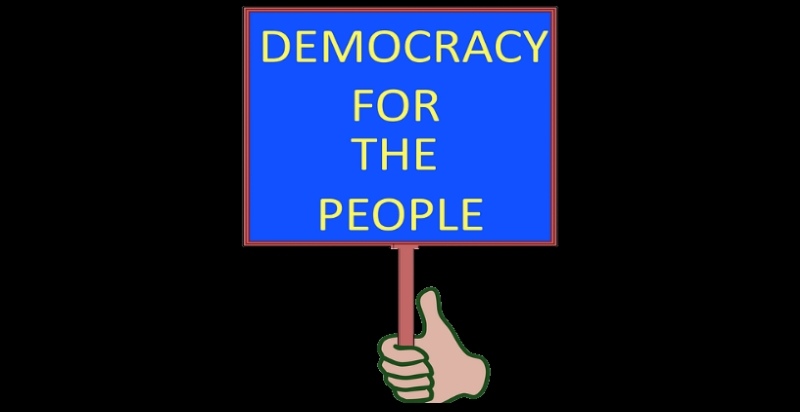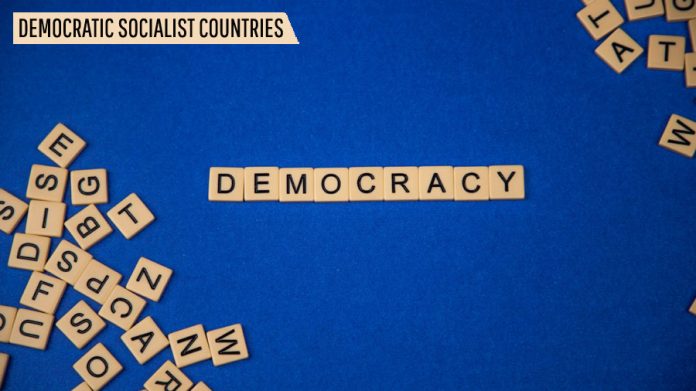Democratic Socialism describes a socialist economy collectively owning production and wealth, but the country has a democratic government system. Socialism’s objective is to achieve socialist equality objectives while opposing socialist ideologies. However, democratic socialists do not think that the Government should immediately take over all aspects of the economy. Democratic Socialism is more focused on providing all people with basic needs like healthcare facilities and education quality. Democratic Socialism would achieve this through democratic means, as opposed to Socialism.
What is a Democratic Socialist?
A Democratic Socialist considers that several basic services, such as healthcare and education, must be provided to the public at a cost or a significant discount. Contrary to socialist believers, democratic socialists do not believe that the Government should supervise all aspects, only support the basic needs and the equal chance of success for all its citizens.
What is the difference between Socialism and Communism?
People under a proper communist system would have no money and be provided with the food, clothing, housing, and so on that which the Government thinks you need. The people need not work harder than everyone else to receive the same amount. Socialism provides compensation for individuals based on their contributions and hence the benefits of those who work harder.
So, without any ado, let’s round up to The Top Ten Democratic Socialist Parties located worldwide. The nations that have socialist parties include:
10. The Netherlands
| Population: | 17,618,299 |
| Ethnic Groups: | 75.75% Dutch, 25.25% Others |
| Government: | Unitary parliamentary constitutional monarchy |
| Poverty Rate: | 13.2% |
The Netherlands has constitutional sovereignty and became a parliamentary democracy in 1848 through Johan Rudolph Thorbecke. In the Netherlands, a consociation state is described. Policymaking in the economic, financial, and social fields is consulted beforehand. In the Social Economic Council, they meet regularly with the Government. This body provides advice to the Government and cannot be easily disregarded. In the Netherlands, social tolerance has a long tradition. The Netherlands combines public and private insurance with the universal approach to social insurance.
9. Ecuador
| Population: | 18,190,484 |
| Ethnic Groups: | 71.9% Mestizo (mixed Amerindian and white), 7.4% Monteiro (coastal Mestizo) |
| Government: | Unitary presidential constitutional republic |
| Poverty Rate: | 23.30% |

Ecuador has a comprehensive national health system, as in many countries. Free medical care is available to all residents without revenue or buying any medical and life insurance, with a comprehensive hospital or regional healthcare. A comprehensive and proactive public health program includes actions like the door-to-door teams of nurses who offer residents influenza vaccines. Remote rural areas are also served with a compulsory one-year “rural” service for doctors, dentists, and nurses serving isolated or under-served populations. Ecuador’s sovereign state is a representative, democratic, and developing country with a middle income.
8. Venezuela
| Population: | 28,838,499 |
| Ethnic Groups: | 51.6% Mestizo (mixed Amerindian and white), 43.6% European (White) |
| Government: | Federal dominant-party presidential constitutional republic |
| Poverty Rate: | 87% |
Due to its success in the industry of oil, the country experienced a healthy economy in the 1970s. The petroleum reserves of Venezuela are known as the world’s largest. In 2019, the country had an estimated 303 million oil barrels from BP’s world energy review. According to the United Nations, Venezuela produces only 30% of its food supply. Historically, in Venezuela, this has been a problem, even though the large trust in importing food existed was “much more exasperated” under Chavez. This led to a starvation crisis, which grew with the rise of inflation. The price of certain food items like butter and eggs was fixed in April by Maduro.
7. Peru
| Population: | 34,352,719 |
| Ethnic Groups: | 94.51% Christianity, 76.03% Roman Catholic |
| Government: | Unitary parliamentary republic |
| Poverty Rate: | 20.5% |

The country is subdivided into 25 regions, divided into departments, provinces, and districts for administrative purposes. The regional government level includes regions and departments; the local government levels include provinces, districts, and smaller population centers. In Peru, numerous government agencies are involved in national safety and health. The Government has made heavy investments in building and installing new hospitals and clinics in the country. However, doctors, nurses, and healthcare centers are not present, especially outside Lima’s urban area, and the country is struggling to achieve adequate health.
6. Italy
| Population: | 58,870,762 |
| Ethnic groups: | 91.5% Italians, 8.5% Others |
| Government: | Unitary parliamentary constitutional republic |
| Poverty Rate: | 7.7% |
On 23 September, the Italian Social Republic was declared head of state and Prime Minister with Mussolini. Mussolini knew that himself; even as he said the RSI in public fully controlled him, he was well aware that he was not much more than Lombardy’s Gauleiter. Italy is known for its generally very good medical system and high life expectancy, low infant mortality, relatively healthy cuisine and diets, and the World Health Organization ranks second. The life expectancy of Italy is one of the highest. The high average Italian is very different from region to region.
5. France
| Population: | 64,756,584 |
| Ethnic Groups: | 51% Christianity, 40% No religion |
| Government: | Unitary semi-presidential constitutional republic |
| Poverty Rate: | 8.3% |

The Socialist Party’s roots go back to the French Revolution. France has a diversified economy dominated by the services sector (which in 2017 represented 78.8 percent of its GDP), whereas the industrial sector accounted for 19.5 percent of its GDP and the primary sector left 1.7 percent. The French health system is one of the government’s most funded universal health services. The World Health Organization pronounced that France provided “the nearest to the best healthcare in the world” in its 2000 assessment of its health systems. France and the European Union, leading agricultural land, are also the world’s most visited destinations.
4. United Kingdom
| Population: | 67,736,802 |
| Ethnic Groups: | 87.1% White, 7.0% Asian |
| Government: | Unitary parliamentary constitutional monarchy |
| Poverty Rate: | 23.2% |
The UK’s market economy is partially regulated. TODAY, the UK is the fifth-largest economy globally and the second biggest in Europe after Germany based on market exchange rates. HM Treasury is accountable for developing and executing public finance and economic policies in the Government, headed by the Exchequer Chancellor. The UK has universal access to improved water and sanitation. The sewage network is estimated to be connected to 96,7% of households. According to the Environment Agency, total public water abstraction in the UK was, in 2007, 16.406 MG per day. United Kingdom education is a matter of course, with each count.
3. Germany
| Population: | 83,294,633 |
| Ethnic Groups: | Germans, Sorbs, Turks in Germany |
| Government: | Federal parliamentary republic |
| Poverty Rate: | 15.9% |

Germany has a highly qualified social market economy with low corruption and a high degree of innovation. In Germany, responsibility is organized primarily in individual countries for education supervision. All children from 3 to 6 years of age who are compulsory to attend school for a minimum of nine years have an optional kindergarten education. Primary school is typically four to six years in length. With its 77-year life expectancy among men and 82 years for women, and a high low infant, Germany ranked 20th in the world in 2019 for a good birth rate.
2. Turkey
| Population: | 85,816,199 |
| Ethnic Groups: | 75% Turk, 19% Kurd, Other 7%-12% |
| Government: | Unitary presidential constitutional republic |
| Poverty Rate: | 8.70% |
Turkey’s secular state has no official state religion. A survey by Ipsos in 2016, which interviewed 17 180 adults in 22 countries, found Islam to be Turkey’s dominant religion with 82% of the population, 13% religiously unaffiliated, while 2% Christian. Pre-tertiary education is the accountability of the Ministry of National Education. It is mandatory and lasts 12 years: each elementary school, middle school, and secondary school is four years old. The Higher Education Board (YÖK), which heads are appointed, controls all state and private universities.
1. Brazil
| Population: | 216,422,446 |
| Ethnic Groups: | 47.73% White, 43.13% Mixed |
| Government: | Federal presidential constitutional republic |
| Poverty Rate: | 20.20% |

Brazil is Latin America’s largest national economy, the world’s 9th largest economy, and, according to 2018 estimates, is the 8th largest in procurement parity (PPP). It is one of a group of four emerging economies called the BRIC countries and has been developing in international financial and commodities markets. For the past 150 years, Brazil has been the biggest coffee producer in the world. Health is a constitutional right in Brazil, and the Minister of Health administers national health policy.
So, these are all about the Top 10 Democratic Socialist Countries in 2023. If you need to take a glimpse at the Country Ranking of all countries with their population in 2023, then have a look below:
| Country | 2023 Population |
|---|---|
| Brazil | 216,422,446 |
| Turkey | 85,816,199 |
| Germany | 83,294,633 |
| United Kingdom | 67,736,802 |
| France | 64,756,584 |
| Italy | 58,870,762 |
| Peru | 34,352,719 |
| Venezuela | 28,838,499 |
| Ecuador | 18,190,484 |
| Netherlands | 17,618,299 |
| Tunisia | 12,458,223 |
| Bolivia | 12,388,571 |
| Portugal | 10,247,605 |
| Serbia | 7,149,077 |
| Nicaragua | 7,046,310 |
| Ireland | 5,056,935 |
| Croatia | 4,008,617 |
| Moldova | 3,435,931 |
| Armenia | 2,777,970 |
| Slovenia | 2,119,675 |
| Luxembourg | 654,768 |
Conclusion!
Some argue that only nations have been successful in adopting socialist policies that are not entirely socialist. A prosperous socialist country Bolivia is an example. Bolivia’s extreme poverty and GDP growth in South America have been drastically reduced. Norway, Finland, Sweden, Denmark, Great Britain, Canada, The Netherlands, Spain, Ireland, Belgium, Switzerland, Australia, Japan, and New Zealand have also pursued socialist ideas and policies and have succeeded in improving their societies.
